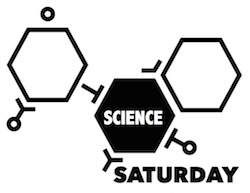 One of the challenges in science is to help students make connections from concepts to their real world. This can be a particular challenge in the field of chemistry. We talk about atoms, molecules, chemical reactions… but how does that connect with the things we see every day?
One of the challenges in science is to help students make connections from concepts to their real world. This can be a particular challenge in the field of chemistry. We talk about atoms, molecules, chemical reactions… but how does that connect with the things we see every day?
Augmented reality is one way to make connections from the abstract to the real world. We’ve seen Aurasma in use in the science classroom before. This free app allows students to create content that becomes an overlay on the actual item. The “aura” is triggered through image recognition. Students can overlay videos, web content, or images on their trigger images. Allowing video and web content means that Aurasma is a great candidate for “app smashing.”
An overlay could be a publicly viewable screencast or a student-built website. For this project, we’ve used the free Java applet Jmol to model molecules.
Creating molecular structure overlays can be just one part of a larger project, where students get to select their own items, research chemical and physical properties, and also find out about the possible dangers of use or disposal. Allowing students to make decisions on what they think is the most important would encourage them to evaluate information from their own perspective. They could report out in a video or web site that could become another overlay for the item. Collecting these items and keeping them around your room is a fun way to allow other students outside the class to experience their peers’ work, which we know encourages students to take their work to a next level.
From a standards perspective, this hits on many ideas in the NGSS PS1A, including MS-PS1-1, MS-PS1-3, HS-PS1-1, HS-PS1-3, and HS-PS1-7. It also pushes students in their communication skills, and allows them to imagine different ways of showing what they know. But perhaps most importantly, it really links science concepts to their everyday world, in a way that a simple report may not.
I haven’t had an opportunity to run this with students yet. If you try it out, please let us know how it went, what difficulties you had, and if you have any suggestions for others.


Molecules in Augmented Reality http://t.co/D1TM6SZlMZ
Molecules in Augmented Reality http://t.co/LDHXZfnzPk
Molecules in Augmented Reality http://t.co/zTS4tExsbG via @innovativeEd
Molecules in Augmented Reality http://t.co/t5nura42Ek
Molecules in Augmented Reality http://t.co/HrZ16WuJgn
Molecules in Augmented Reality – Innovation: Education http://t.co/G5nkbd50z9